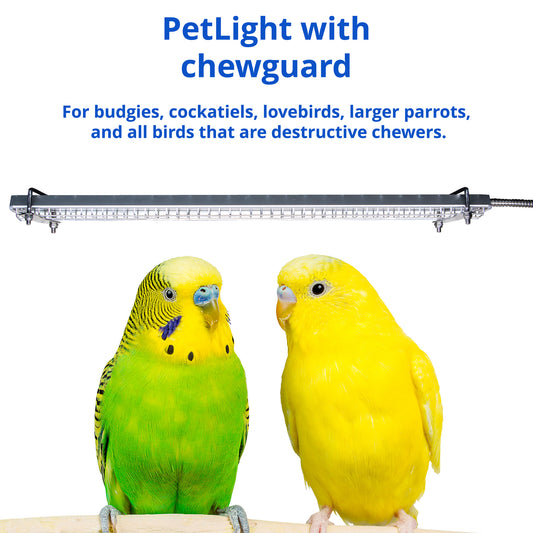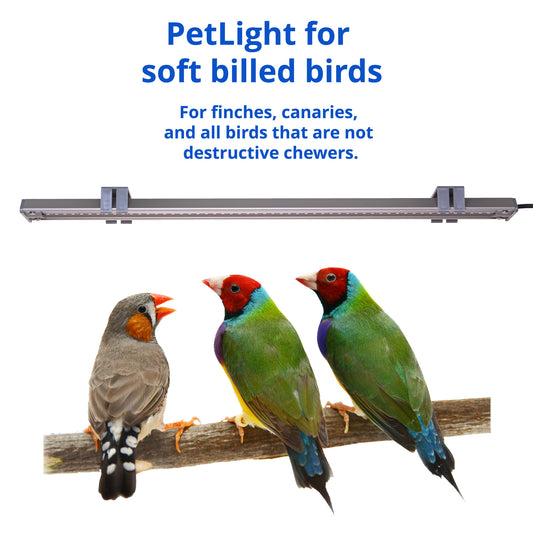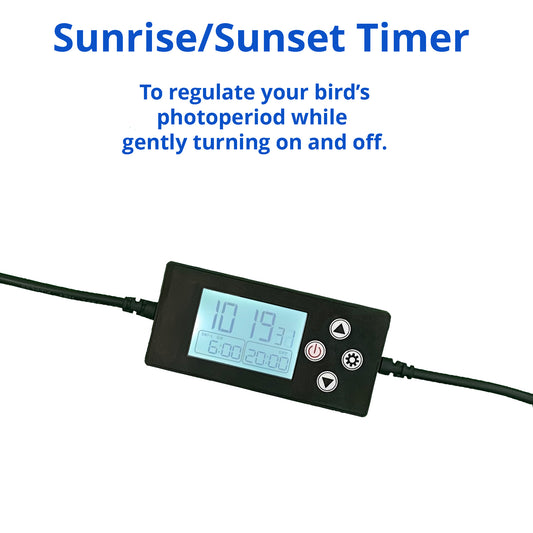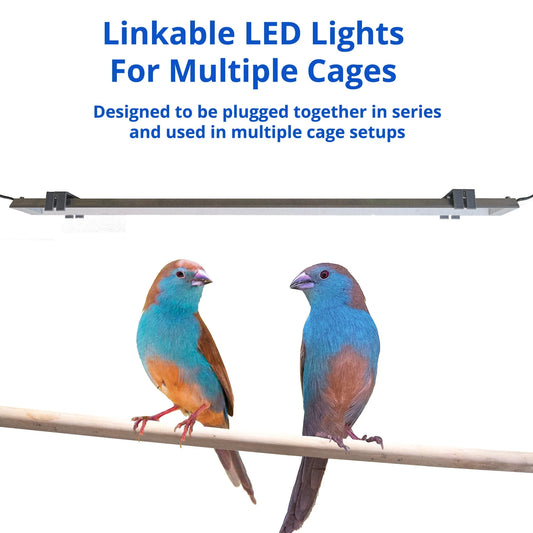Can Lighting Affect Bird Behavior?
Share

Birds are expressive — sometimes joyful, sometimes loud. And while yelling, squawking, and vocal outbursts are part of normal bird communication, many owners notice patterns:
Birds that yell more at certain times of day. Birds that get louder after the lights go on — or after the sun sets.
Could lighting be a factor?
There’s no scientific study that fully explains why birds yell — but based on routine observations, owner anecdotes, and practical experience, there’s growing reason to believe that lighting plays a bigger role than we once thought.
Birds Live by Light, Not Clocks
In the wild, birds wake with the sun, stay active during daylight, and retreat as dusk arrives. Indoors, they can’t rely on natural cues — they rely on you and your lighting setup to recreate their day.
When that lighting is inconsistent, too dim, or overly artificial, birds may become overstimulated, restless, or stuck in an unstructured rhythm — and that can show up in their behavior.
Yelling: What We Know (and Don’t Know)
“Birds yelling” is a phrase every parrot or cockatiel owner has Googled at least once. There’s no definitive research behind it — but common patterns emerge:
Sudden outbursts in the evening
Restless pacing and calling during low light hours
Excessive vocalization that aligns with seasonal changes
Many bird owners have reported that improving the lighting in their setup — especially with full, even light inside the cage — reduces the frequency or intensity of yelling.
While not proven, the pattern is repeated often enough to consider lighting a possible contributing factor.
What Kind of Lighting May Influence Bird Behavior?
Based on owner feedback and daily observation, here are some lighting-related triggers that might align with changes in bird vocalization:
| Lighting Issue | Possible Effect (Anecdotal) |
|---|---|
| Too much light at night | Confusion about when to settle |
| Sudden changes in brightness | Startles or disrupts calm |
| Dim, uneven light in cage | Causes birds to call out for attention or contact |
| Flickering light | Visually stressful — invisible to humans |
| Unclear day/night cycle | Contributes to irregular energy or vocal bursts |
What Some Owners Have Noticed with HappyBird
While no formal studies exist, some bird owners using HappyBird lights have shared positive anecdotes:
Birds seemed more settled after lights were placed directly on the cage
Yelling reduced when lighting was more consistent
Hormone-driven behavior appeared to level out during longer, stable light periods
Birds became more relaxed in bright, flicker-free environments
Again, this isn’t a medical claim or proven outcome — just recurring observations from people who’ve made the switch to bird-specific, low-voltage lighting with no UVB and a stable 10–12 hour light cycle.
How to Support More Consistent Bird Behavior with Light
If you’re experiencing excessive vocalization or erratic energy in your bird, consider making these lighting adjustments:
✅ Use a light that mounts directly to the cage and reaches the bird’s environment
✅ Stick to 10–12 hours of light per day — not more, not less
✅ Avoid household lamps or “warm glow” bulbs made for people
✅ Never use lights with UVB indoors
✅ Use flicker-free, bird-safe fixtures with stable brightness
This doesn’t guarantee silence — birds will always have something to say — but it may reduce overstimulation and give your bird a more natural sense of time and space.




